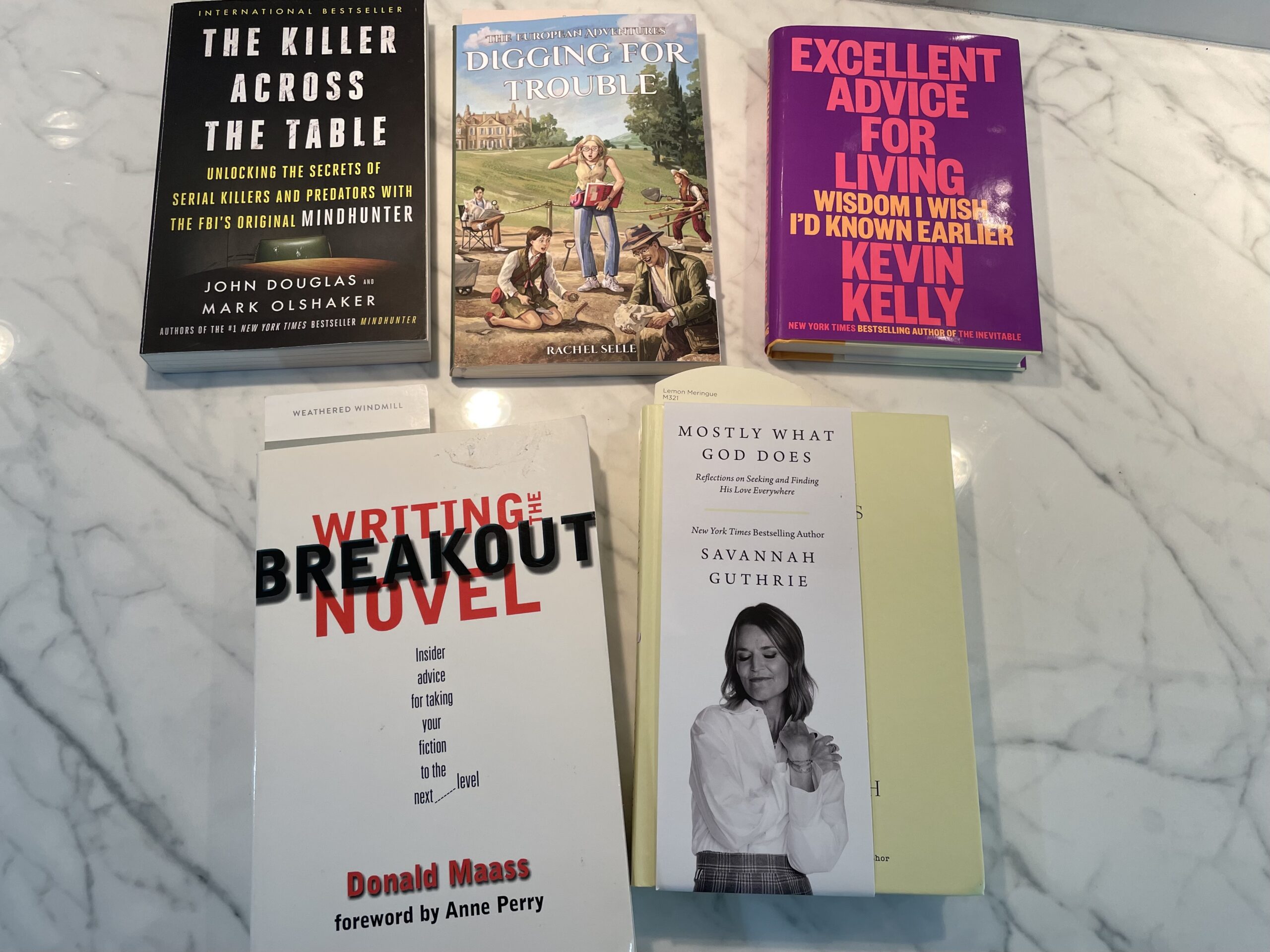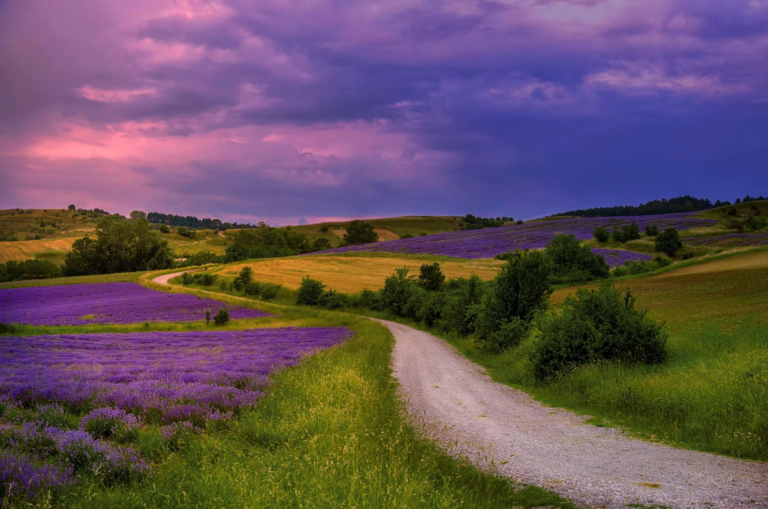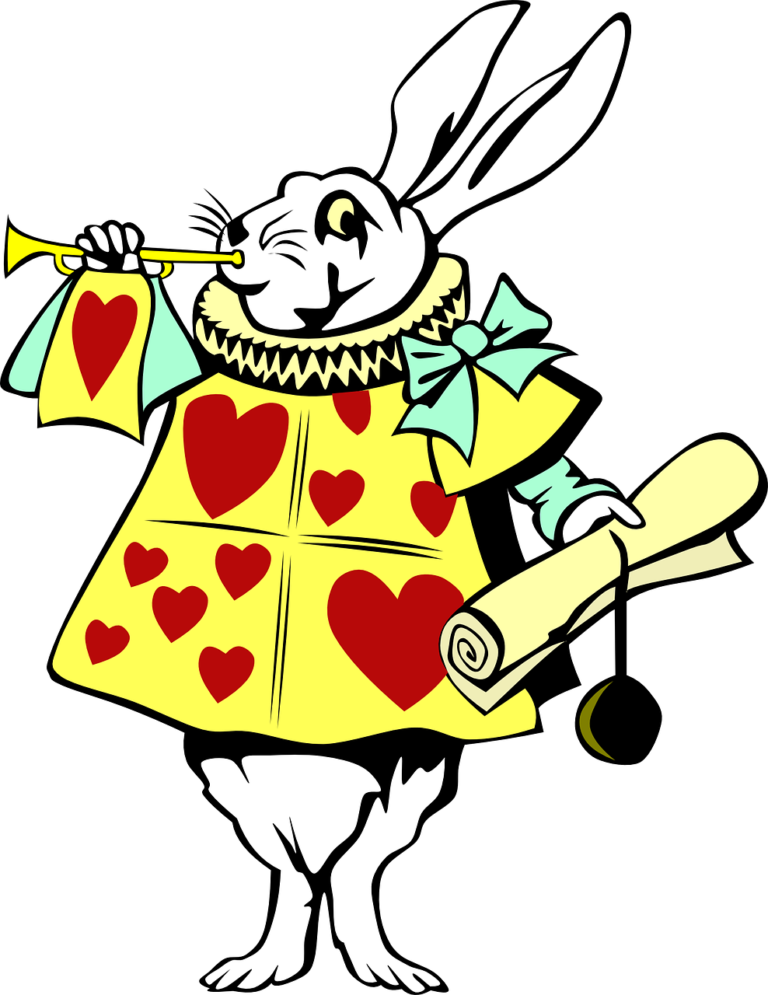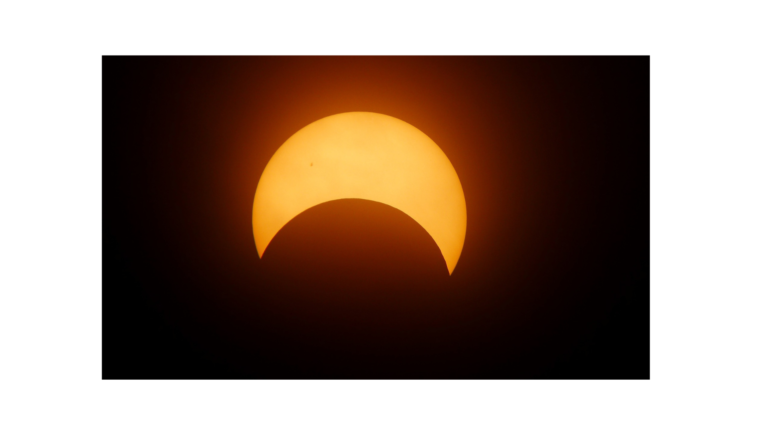
How varied is your reading list?
I feel like mine should be full of books about rainbows and unicorns and butterflies since I write children’s books.
It’s not.

Kids don’t stick to books about rainbows and lollipops, and neither do I.
So I read a variety of books.
And I get something valuable from each one that applies to my life or to my writing.
Here’s what I’m reading for the next couple of weeks.
The Killer Across the Table by John Douglas and Mark Olshaker (Nonfiction)
This darkly fascinating book is written by a former FBI criminal profiler and analyst, who shares interviews with and insights into serial murderers to learn what makes them tick in hopes of stopping or catching future serial murderers.
One tidbit: “Past behavior is the best predictor of future behavior.”
Excellent Advice for Living by Kevin Kelly (Nonfiction).
The subtitle of this book is Wisdom I Wish I’d Known Earlier.
I was going to give it to my kids, but I’m hanging onto it because it’s full of advice that, well, I wish I’d known earlier.
I’ll get my kids their own copies.
One tidbit: “Shorten your to-do list by asking yourself, ‘What is the worst that will happen if this does not get done?’ Eliminate all but the disasters.”
Mostly What God Does by Savannah Guthrie (Nonfiction).
Today Show anchor Guthrie has always had a deep faith and now she’s sharing it in this collection of essays.
One tidbit: “[God] is present to us, whether or not we are not present to him.”
Digging for Trouble by Rachel Selle (Middle grade fiction).
I’ve been waiting for this book for months!
It’s written by an author that I met on Facebook a few years ago.
She publishes The European Adventures, a series of middle grade sleuth novels.
I’m always so impressed by the quality of her books as well as her writing.
She does everything herself—except the illustrations.
This is her third book in the series and it takes place in England at an archaeological dig.
The writing is so wholesome—it reminds me of Nancy Drew books.
The kids in the book are aged 6 to 16.
Rachel adds in historical information that’s quite interesting.
I wholeheartedly recommend this series to middle-grade readers, aged 8-12.
One tidbit: Julius Caesar used a secret code to send messages throughout the Roman Empire. Now it’s called the Caesar Cipher and is one of the simplest and most widely known encryption techniques (I didn’t know.).
The Whisperwicks by Jordan Lees (Middle grade fiction).
This is a recommendation from a fellow blogger, Bill Wiist of WiistLore (billwiist.substack.com).
I’m bad about reading current middle-grade fiction and this one sounds good.
I haven’t started reading this, so I have no tidbit.
Writing the Breakout Novel by Donald Maass (Nonfiction).
I know in a previous post I suggested not reading any more craft books for a while.
But I couldn’t help myself.
I mean, what writer doesn’t want to learn how to write a breakout novel?
One tidbit: “If there is one single principle that is central to making any story more powerful, it is this: Raise the stakes.”
So these will keep me busy.
By the way, here’s where I find the time to read: when I’m drying my hair because it takes forever, before I go to sleep, and as part of my “morning work.”
I’ve found that reading just a few pages from a couple of books in the morning for 15 or 20 minutes results in finishing a lot of books.
Bit by bit, things get done.
Amazing.
What’s on your reading list?
Until next time,
~Gail
Countdown: 24 weeks left of 2024
Before you go, don’t forget to sign up for my mailing list, below:





I will definitely check out the Kevin Kelley book and those middle grade novels! This summer, I am reading The Romance of Reality by Bobby Azarian (non-fiction), Scritch Scratch by Lindsey Currie (middle-grade), Red Rising by Pierce Brown (sci-fi), and A New Republic of the Heart by Terry Patten (non fiction).
Scritch Scratch sounds eerily good. Thanks for the list, Kurt. BTW: Digging for Trouble is written by the woman I mentioned to you who self-publishes beautifully!